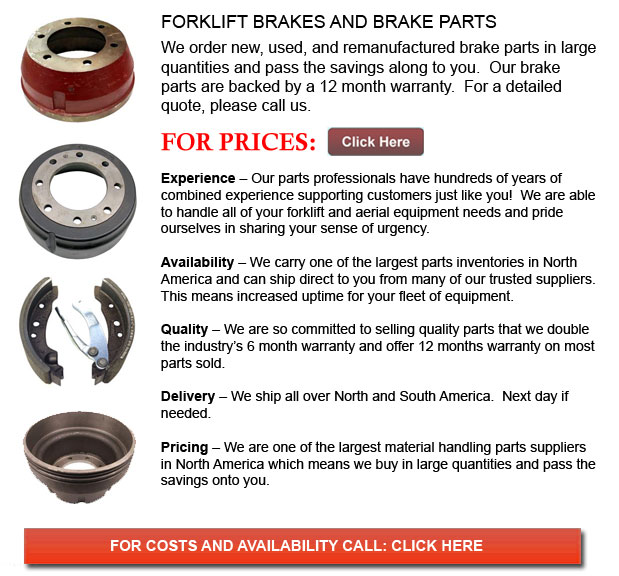
Forklift Brakes - A brake wherein the friction is supplied by a set of brake pads or brake shoes which press against a rotating drum shaped unit known as a brake drum. There are several particular differences among brake drum types. A "brake drum" is normally the explanation provided if shoes press on the interior outside of the drum. A "clasp brake" is the term utilized to be able to describe whenever shoes press against the outside of the drum. One more type of brake, referred to as a "band brake" utilizes a flexible band or belt to wrap around the outside of the drum. Where the drum is pinched in between two shoes, it can be known as a "pinch brake drum." Similar to a standard disc brake, these kinds of brakes are rather rare.
Old brake drums, prior to nineteen ninety five, needed to be consistently adjusted to be able to compensate for wear of the drum and shoe. "Low pedal" can cause the required adjustments are not performed satisfactorily. The motor vehicle can become dangerous and the brakes could become ineffective when low pedal is combined along with brake fade.
There are quite a few various Self-Adjusting systems utilized for braking presented nowadays. They can be classed into two individual categories, the RAD and RAI. RAI systems are built-in systems which help the device recover from overheating. The most well known RAI makers are Bosch, AP, Bendix and Lucas. The most famous RAD systems include Ford recovery systems, Volkswagen, VAG, AP and Bendix.
The self adjusting brake would typically only engage when the lift truck is reversing into a stop. This method of stopping is satisfactory for use where all wheels utilize brake drums. Disc brakes are utilized on the front wheels of motor vehicles these days. By functioning only in reverse it is less likely that the brakes would be applied while hot and the brake drums are expanded. If adapted while hot, "dragging brakes" could take place, which increases fuel consumption and accelerates wear. A ratchet tool which becomes engaged as the hand brake is set is one more way the self adjusting brakes may operate. This means is only appropriate in applications where rear brake drums are used. Whenever the emergency or parking brake actuator lever goes beyond a particular amount of travel, the ratchet improvements an adjuster screw and the brake shoes move toward the drum.
Located at the base of the drum sits the manual adjustment knob. It could be adjusted making use of the hole on the other side of the wheel. You will have to go underneath the vehicle together with a flathead screwdriver. It is extremely significant to adjust every wheel equally and to be able to move the click wheel properly for the reason that an unequal adjustment may pull the vehicle one side during heavy braking. The most effective way in order to guarantee this tedious task is done carefully is to either raise each and every wheel off the ground and hand spin it while measuring how much force it takes and feeling if the shoes are dragging, or give each one the exact amount of clicks utilizing the hand and then do a road test.
![]() Click to Download the pdf
Click to Download the pdf
Forklift Parts
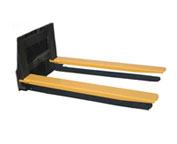

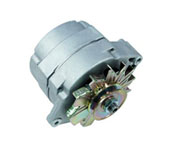
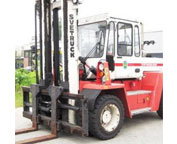
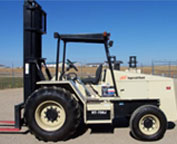
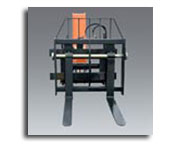

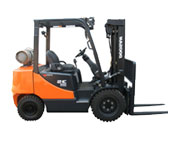
Lift Parts Express
TOLL FREE: 1-888-695-7994
Arlington, Texas
forkliftpartsarlington.com
Email Us
About Us


